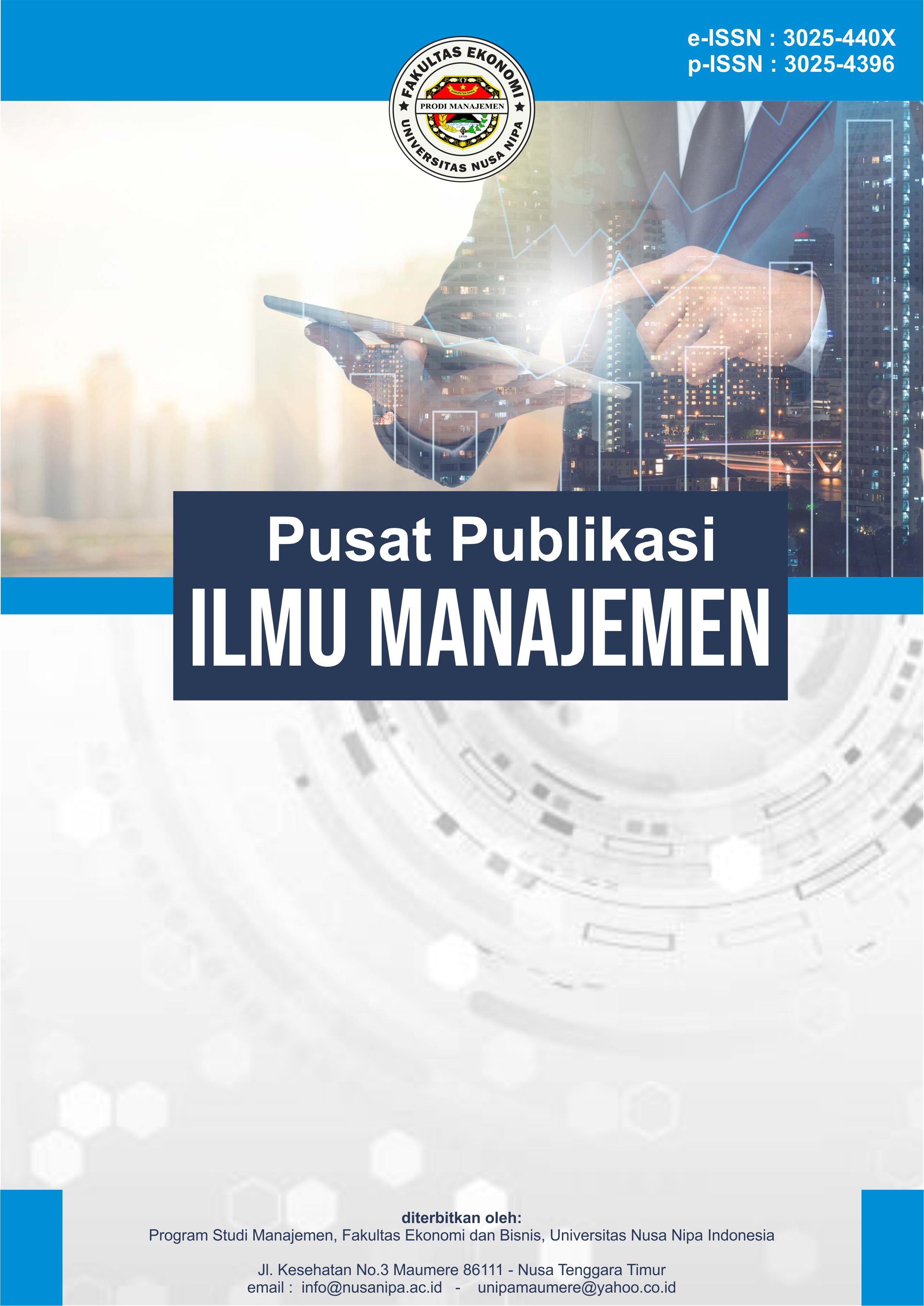Analisis Stress Kerja Karyawan
Studi Kasus Pada PT X
DOI:
https://doi.org/10.59603/ppiman.v3i3.874Keywords:
Human Resources, Organizational Behavior, Workload, Work Motivation, Work StressAbstract
This research aims to analyze employee work stress at PT X. The objectives of this study include understanding the factors that cause employee work stress at PT X, knowing the strategies used by PT X in overcoming work stress, and the company's response to employee work stress that occurs at PT X. The research method used is descriptive analysis with a qualitative approach. The background of this research is based on excessive workload in the work environment, decreased motivation caused by a lack of attention from the company to workers. The results of this study show that high levels of stress among PT X employees significantly affect employee performance. Employees often feel frustrated to the point of forcing themselves to complete work quickly. As a result, employees are exposed to work stress and performance productivity decreases. To overcome this problem. PT X has implemented workload mapping strategies, appreciation in the form of compensation, and recruitment of new employees. The implementation of this strategy has shown positive results in improving employee productivity and performance efficiency. This study concludes that high work stress has certain consequences on employee performance. Recommendations include stress management programs, periodic performance effectiveness evaluations, and further studies that explore the relationship of job stress with other variables, such as individualism and leadership. The findings are expected to contribute to the development of more effective human resource management strategies in modern work environments.
References
Afrizal. (2019). Metode penelitian kualitatif. Rajawali Press.
Agusta, I. (2003). Teknik pengumpulan dan analisis data kualitatif. Pusat Penelitian Sosial Ekonomi Pertanian, 27(10), 179–188.
Ahmad, Y., Tewal, B., & Taroreh, R. N. (2019). Pengaruh stres kerja, beban kerja, dan lingkungan kerja terhadap kinerja karyawan pada PT. FIF Group Manado. Jurnal EMBA: Jurnal Riset Ekonomi, Manajemen, Bisnis dan Akuntansi, 7(3).
Alfansyur, A., & Mariyani, M. (2020). Seni mengelola data: Penerapan triangulasi teknik, sumber dan waktu pada penelitian pendidikan sosial. Historis: Jurnal Kajian, Penelitian dan Pengembangan Pendidikan Sejarah, 5(2), 146–150.
Almigo, N. (2014). Hubungan antara kepuasan kerja dengan loyalitas karyawan. Jurnal Ekonomi dan Bisnis, 12(5), 145–187.
Ariyaningsih, S., Andrianto, A. A., Kusuma, A. S., & Prastyanti, R. A. (2023). Korelasi kejahatan siber dengan percepatan digitalisasi di Indonesia. Justisia: Jurnal Ilmu Hukum, 1(1), 1–11.
Ashita, S. (2015). A review study on the information technology applications in hotel industry. Journal of Economic Studi, 22(2), 1–10.
Christy, N. A., & Amalia, S. (2017). Pengaruh stres kerja terhadap kinerja karyawan. Jurnal Riset Bisnis dan Investasi, 3(2), 74–83.
Denzin, N. K., & Lincoln, Y. S. (Eds.). (2009). Handbook of qualitative research (2nd ed.). Sage Publications.
Fadhallah, R. A. (2021). Wawancara. UNJ Press.
Fahamsyah, D. (2017). Analisis hubungan beban kerja mental dengan stres kerja. The Indonesian Journal of Occupational Safety and Health, 6(1), 107–115.
Fuanida, A. (2016). Pengaruh kompensasi, stres kerja, dan motivasi terhadap loyalitas kerja karyawan CV. Sapu Dunia Semarang. Jurnal Ilmu Administrasi Bisnis, 4(6), 128–211.
Hansen, S. (2020). Investigasi teknik wawancara dalam penelitian kualitatif manajemen konstruksi. Jurnal Teknik Sipil, 27(3), 283.
Hasanah, H. (2017). Teknik-teknik observasi (sebuah alternatif metode pengumpulan data kualitatif ilmu-ilmu sosial). At-Taqaddum, 8(1), 21–46.
Khairuddin, K. (2022). Hubungan antara stres kerja dengan produktivitas kerja pada karyawan. Jurnal Social Library, 2(1), 24–30.
Lince, L. (2022). Implementasi kurikulum merdeka untuk meningkatkan motivasi belajar pada Sekolah Menengah Kejuruan Pusat Keunggulan. Prosiding Seminar Nasional Fakultas Tarbiyah dan Ilmu Keguruan IAIM Sinjai, 1, 38–49.
Makkira, M., Syakir, M., Kurniawan, S., Sani, A., & Ngandoh, A. M. (2022). Pengaruh stres kerja, komunikasi kerja dan kepuasan kerja terhadap prestasi kerja karyawan pada PT. Prima Karya Manunggal Kabupaten Pangkep. Amkop Management Accounting Review (AMAR), 2(1), 20–27.
Manihuruk, C. P., & Tirtayasa, S. (2020). Pengaruh stres kerja, motivasi kerja dan lingkungan kerja terhadap semangat kerja pegawai. Maneggio: Jurnal Ilmiah Magister Manajemen, 3(2), 296–307.
Martono, N. (2010). Metode penelitian kuantitatif: Analisis isi dan analisis data sekunder. Raja Grafindo Persada.
Miles, M. B., Huberman, A. M., & Saldaña, J. (2014). Qualitative data analysis: A methods sourcebook (3rd ed.). SAGE Publications.
Pandey, D. L. (2020). Work stress and employee performance: An assessment of impact of work stress. International Research Journal of Human Resource and Social Sciences, 7(05), 124–135.
Renggo, Y. R., & Kom, S. (2022). Populasi dan sampel kuantitatif. Dalam Metodologi Penelitian Kuantitatif, Kualitatif dan Kombinasi (hlm. 43).
Rijali, A. (2018). Analisis data kualitatif. Alhadharah: Jurnal Ilmu Dakwah, 17(33), 81–95.
Robbins, S. P., & Coulter, M. (2010). Manajemen. Erlangga.
Downloads
Published
How to Cite
Issue
Section
License
Copyright (c) 2025 Pusat Publikasi Ilmu Manajemen

This work is licensed under a Creative Commons Attribution-ShareAlike 4.0 International License.






